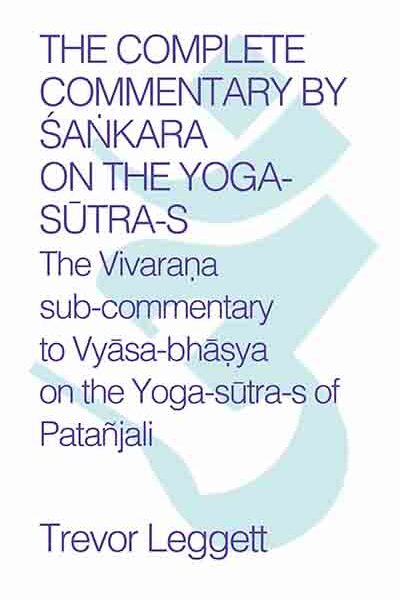Śaṅkara on the Yoga Sūtra-s

Book description
This book contains the first complete English translation of the previously unknown sub-commentary, or vivarana, by Śaṅkara on Vyāsa’s commentary on the Yoga Sūtra-s of Patanjali. This new edition contains a fascinating new foreword by Dr Kengo Harimoto. Trevor Leggett’s Introduction addresses the issues surrounding the authenticity of the Vivarana as a work by Śaṅkara. This new edition also contains a new section by the author on ’ How to use this book for Yoga practice’ in which he says ‘When enthusiasm flags read sutra-s 11.15-17; look around you and see how anxiety, pain and death are rushing towards us like an express train. Yoga is a way to escape them.’
Paperback published by TLAYT
ISBN 9781911467083
Price £9.99
eBook published by TLAYT
ISBN 9781911467045
Price £9.99
Book extract
Sūtra I.28
Repetition of it and meditation on its meaning
Repetition (japa) of it and meditation (bhāvanā) on the Lord who is signified by OM. When the yogin thus repeats OM and meditates on its meaning, his mind becomes one-pointed. So it has been said:
After OM repetition, let him set himself in yoga,
After yoga, let him set himself to repetition.
When OM repetition and yoga come to perfection
The supreme self (paramātman) shines forth.
When the yogin has thus understood the relation of the expression OM and its meaning, how does he attract the grace of the supreme Lord? The sūtra says, Repetition of it and meditation on its meaning. Practice of repetition of OM, which is the expression of the Lord, taken as consisting of three-and-a-half measures (mātra) or of three measures, is called japa; the repetition is either mental or in a low voice (upāṃśu).
meditation on its meaning the meditation is setting the heart on the Lord, the meaning, who by the word OM has been recalled and brought into the mind. The words he should undertake are to be supplied at the beginning of the sūtra. Yogin-s who are doing both attain one-pointedness of mind. He illustrates how the one-pointedness is the result of that worship by quoting the verse.
After OM repetition after repetition of the praṇava syllable, his mind bowed before the Lord, let him set himself in yoga let him meditate on the Lord, its meaning. When his mind becomes unwavering from meditation on the Lord, the meaning, let him set himself to repetition let him repeat OM mentally. Mental repetition is recommended because it is closer to meditation (than is verbal repetition). The sense is that the mind must not run towards objects.
When OM repetition and yoga come to perfection when he is not disturbed by other ideas contrary to them, he is perfect in repetition and in yoga; by that perfection in repetition and meditation on the supreme Lord (parameśvara) the supreme self (paramātman) who stands in the highest place (parameṣṭhin) shines forth for the yogin.
Book Review
…We are happy to have the first complete translation of this important work….
On the question of its authenticity, there is much work to be done … the author in his long introduction discusses briefly but effectively many points, textual and philosophical. Of interest even to the ordinary reader is, that Sri Śankara had an idea of gravitation as a pull (p.6) And this is vouched for by (his) observation under the Yogasutra I.25 (of the present text), the Prashna Upanishad 3.8 and the Taittiriya Upanishad 2.2…
It is a pleasure indeed to go through the lucid English translation…There are some critical points to be made, but of only minor nature. We heartily congratulate Mr. Leggett on his success in bringing out the first faithful and lucid translation of this difficult text.
– Adyar Library Bulletin, 1991
The author, who lived for more than ten years in India and Japan and is well known to the members of our Society from his books on Zen, has hereby completed his monumental translation work…a truly admirable piece of scholarly labour…will be a real help to students of comparative religion and philosophy, as to those involved in meditation…
The Technical Introduction gives hints about practical scholarly views of the text and presents the author’s own basic textual analysis and asessments of the shifting positions of Śankara and other commentators on the Yoga Sutras as well as some correspondences with the Bhagavad Gītā and puts forth some further arguments in favour of Śankara’s authorship. Study of the work is also greatly helped by a very detailed contents table.
The translation itself is very readable as far as the difficult subject allows; its lucid style being no doubt the result of the author’s thorough acquaintance with the subject-matter; not only theoretically, but also through his own meditational practice, a rare combination of unbiased scholarship and personal involvement.
– Dr. Karel Werner: The Middle Way February 1992